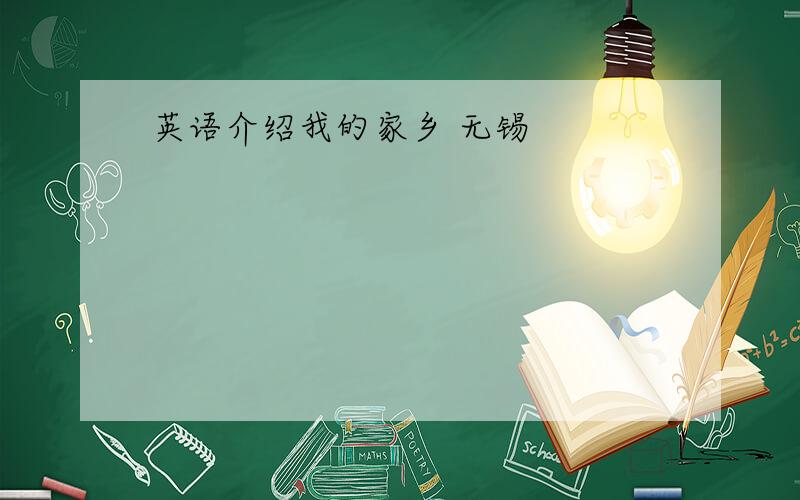英语介绍我的家乡 无锡
来源:学生作业帮助网 编辑:作业帮 时间:2024/04/29 11:56:32

英语介绍我的家乡 无锡
英语介绍我的家乡 无锡
英语介绍我的家乡 无锡
Wuxi (simplified Chinese: 无锡; traditional Chinese: 无锡; pinyin: Wúxī; former spellings: Wu-shi, Wushi, or Wu-hsi; lit. "Without Tin"; Shanghai dialect: [ɦuɕiɪʔ]) is an old city in Jiangsu province, People's Republic of China. Split in half by Lake Taihu, Wuxi borders Changzhou to the west and Suzhou to the east. The northern half looks across to Taizhou across the Yangtze River, while the southern half also borders the province of Zhejiang to the south. Wuxi earned its nickname "Pearl of Lake Tai" because it's built on the shore of Lake Tai in a scenic setting. Wuxi was also dubbed "little Shanghai" because of its close proximity to the city, rapid urbanization and booming economy. Wuxi also has a history of business people involved in modern Shanghai commerce since the early 20th century.
Culture
Jichang Garden
Wuxi Painter Yu Wenshan c. 1658, landscape With Western Influenced Perspective
As an important city for the "Wu" area, its culture bears distinctive characteristics, which can be identified in its dialect, architecture, waterway transportation and various art types.
It was one of the art and cultural centers of "Jiangnan", with several famous Chinese authors claiming Wuxi as their home town. Among them, most recently, Qian Zhongshu, author of Fortress Besieged, a comedy of manners set in China in the 1930s. Wuxi was the birthplace of the famous Chinese (later American) artist Chen Chi (1912—2005), in whose honor a museum has been erected in the city.
One of the handicraft specialties of Wuxi is the production of Huishan clay figurines.
In modern times Wuxi has produced a number of cultural figures such as Hua Yanjun (1893–1950) also known as "Blind Abing" (瞎子阿炳), famous for his erhu and pipa music. Another famous musician is Liu Tianhua, who was the first to compile folk music using staff
Geography
The city plan, as is typical of many older Chinese cities, is of a central city with a roughly circular plan, crisscrossed with older canals, the main canal still seeing heavy barge traffic.
Wuxi itself is on an alluvial plain of deep sedimentary deposits cut between limestone foothills, making it one of the sources for "scholar's rocks", the intricately weathered stones which were used as devices for contemplation.
Economy
Wuxi Modern Area
Currently Wuxi is designated an investment grade city, and has two large industrial parks devoted to new industry. While current manufacturing centers on textiles, there are projects to move to electric motor manufacturing and MRP software development. Most recently there has been a movement toward the solar city of China with two big solar companies (STP and JHL) listed on overseas stock exchanges.
A major push has been made by the Wuxi government to become a leader in new energy industries. According to the most recent figures (2002) from local government, 24% of economic activity is textile trade, and another 25% is industrial based manufacturing, including motors, molds and casting, with another 8% being light industry.
In 2008 new energy industries were worth 37.8 Billion RMB, with the solar photovoltaic industry accounting for 30.2 Billion RMB of the total.A The GDP per capita was ¥81,151 (US$11,885) in 2009, ranked second in Jiangsu Province, less than Suzhou but more than the capital city Nanjing.
Wuxi is one of the top business cities in China. According to Forbes ranking, Wuxi is in the third position for best business cities in Mainland China in 2008.
The center of the city is filled with modern high rise buildings and the market is being redeveloped in a postmodern style. Hynix completed a new chip plant in Wuxi.